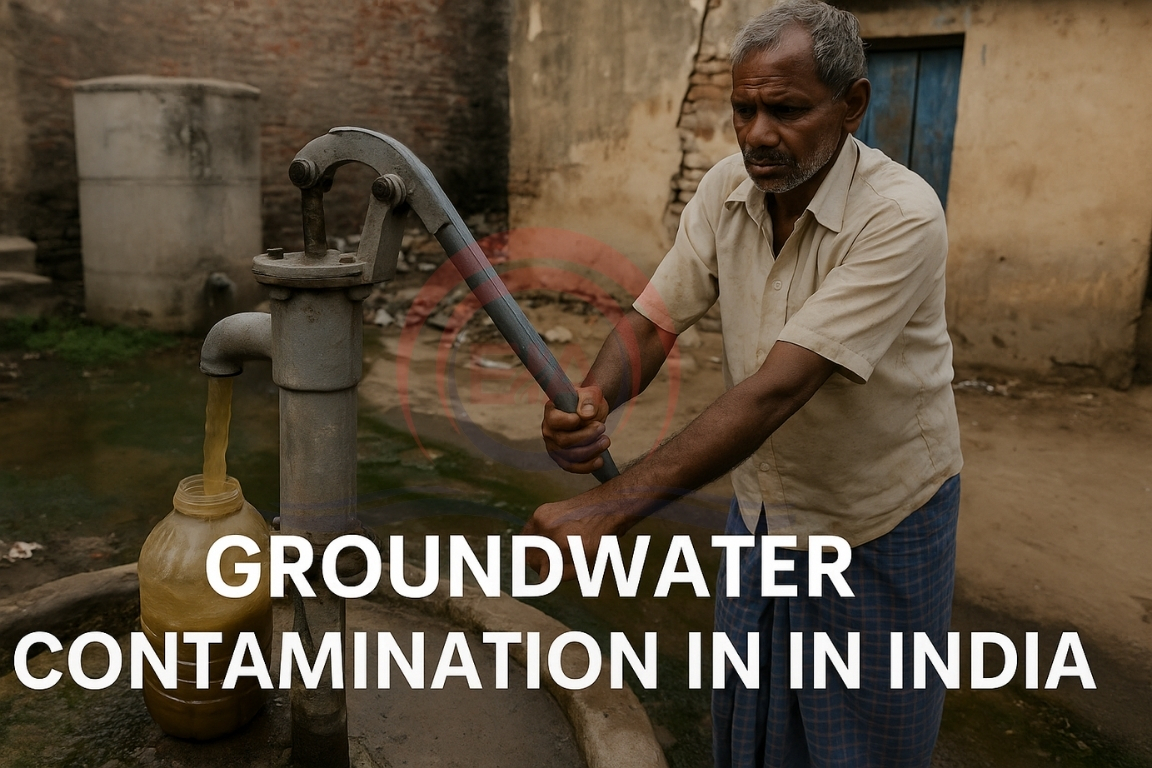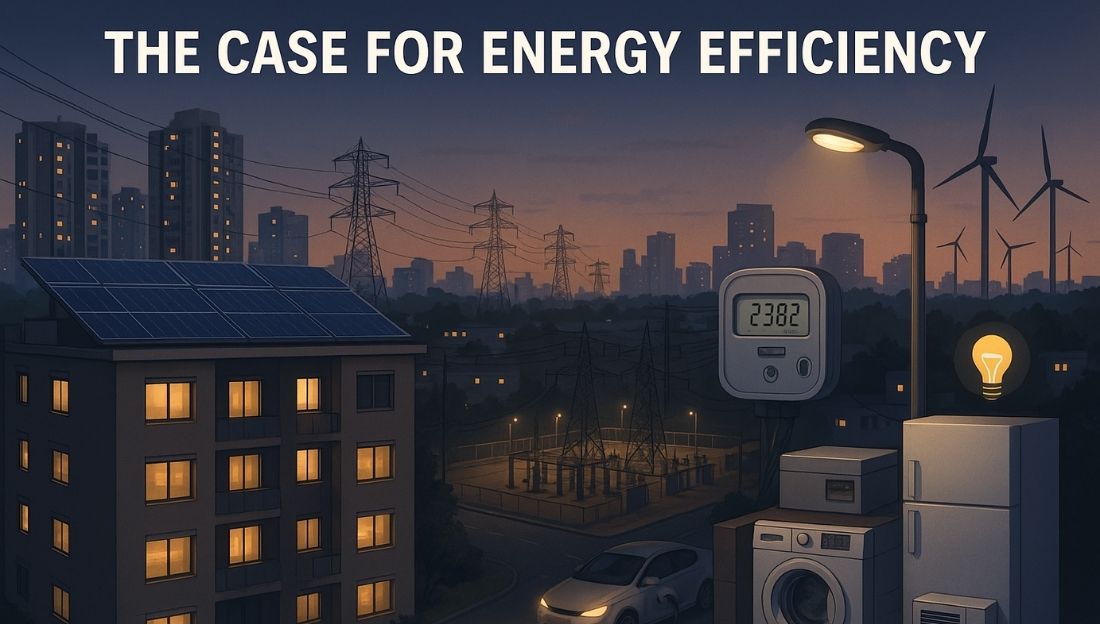The 2024 Annual Groundwater Quality Report by the Central Ground Water Board (CGWB) has revealed alarming levels of contamination — including fluoride, arsenic, nitrates, and heavy metals — in India’s groundwater, posing a severe public health crisis.
Background
- Groundwater provides over 85% of rural drinking water and 65% of irrigation in India.
- Once considered safe, groundwater is now being polluted by industrial waste, excessive fertilizer use, and sewage leaks.
Key Contaminants and Health Impacts Fluoride
- Found in 230 districts across 20 states.
- Causes skeletal and dental fluorosis, especially in Rajasthan, Andhra Pradesh, Madhya Pradesh, and Telangana.
- High levels recorded in Sonebhadra (UP) and Shivpuri (MP).

Arsenic
- Concentrated in the Gangetic belt — Bihar, West Bengal, Uttar Pradesh, Jharkhand, Assam.
- Leads to cancers, skin diseases, and organ failure.
- In Ballia (UP), arsenic reached 200 µg/L, 20 times WHO’s limit.
Nitrates
- Caused by fertilizer overuse and leaking septic tanks.
- Dangerous for infants — can cause “blue baby syndrome”.
- 56% of districts have unsafe nitrate levels.
Uranium
- Found increasingly due to over-extraction and fertilizers.
- Affects kidney and organ health, especially in Punjab’s Malwa region.
Heavy Metals (Lead, Cadmium, Mercury)
- Enter groundwater through industrial discharge.
- Lead to developmental delays, anemia, and nerve damage, especially in industrial towns like Kanpur and Vapi.
Why the Crisis Persists
- Weak regulation: The Water Act, 1974 barely covers groundwater.
- Lack of authority: CGWB has no legal enforcement powers.
- Underfunded state bodies: State Pollution Control Boards lack resources and staff.
- No real-time monitoring: Data is scattered and not publicly available.
- Over-extraction: Low water tables concentrate toxins.
Notable Incidents
- Baghpat (UP): 13 deaths linked to industrial waste in borewells.
- Jalaun (UP): Petrol-like fluids from hand pumps.
- Bhubaneswar: Over 500 fell ill due to sewage-contaminated groundwater.
Way Forward
- Create a National Groundwater Pollution Framework.
- Install modern monitoring tools for real-time alerts.
- Enforce legal penalties for polluters.
- Remediate toxic zones and provide safe drinking alternatives.
- Promote citizen awareness and local water governance.
Conclusion:
India’s groundwater problem is no longer just about shortage — it’s about safety. The contamination crisis is invisible but deadly. Without swift action, the damage may soon become irreversible, costing lives, health, and future generations.





